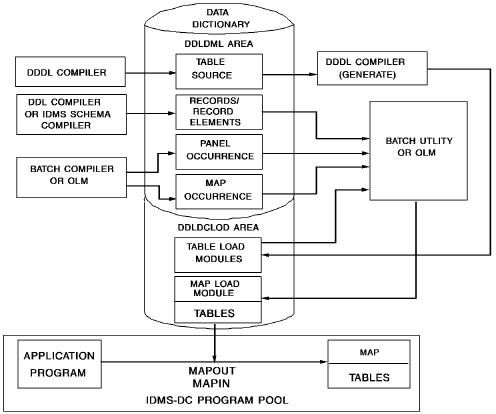

A built-in table belongs to the record element with which it is generated and can only be used by that element. Built-in tables typically are used to list values in the following cases:
The RECORD ELEMENT or COBOL substatement of the DDDL RECORD statement is used to add or replace an element definition in a record. When either substatement is executed, edit and/or code tables (if any) defined in the substatement are generated as built-in tables for the added or replaced element. Either of the following clauses in a RECORD ELEMENT or COBOL substatement establishes a built-in table for an element:
Note: For more information about DDDL syntax and syntax rules, see the CA IDMS IDD DDDL Reference Guide.
Rules for Built-in Tables
The following rules apply to built-in tables:
A built-in table is part of each map load module that is associated with the element that contains the table. A map load module must be regenerated if it is to reflect changes made to a constituent built-in table.
Compiling, Generating, and Loading
Built-in Tables
The compilation, generation, and runtime loading of a map that uses built-in tables are illustrated in the following figure.
A built-in table is part of a map load module that uses it; the map load module must be recompiled if a constituent built-in table is changed.

|
Copyright © 2013 CA.
All rights reserved.
|
|